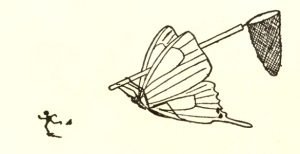
What Caught Our Attention: Nanotechnology researcher Dmitri Lapotko, whose work with lasers continues to catch media attention, has earned his fourth retraction. As with the other three, the latest notice mentions an investigation at Rice University, but provides no specific information other than “data falsification” for images, and no indication as to the offending researcher(s). (In the past, Rice hasn’t even confirmed to us the presence of an investigation.) Only Laptoko and Ekaterina Lukianova-Hleb are common authors to all retractions. Despite these recent setbacks, Lapotko has not fared too badly in research funding. In August 2017, he received almost half a million dollars in renewal funds from the U.S. National Institutes of Health for his research at Masimo Corporation.
Journal: PLoS One
Authors: Ekaterina Y. Lukianova-Hleb, Xiaoyang Ren, Pamela E. Constantinou, Brian P. Danysh, Derek L. Shenefelt, Daniel D. Carson, Mary C. Farach-Carson, Vladimir A. Kulchitsky, Xiangwei Wu, Daniel S. Wagner, and Dmitri O. Lapotko
Affiliations: Rice University, Houston, Texas, USA; National Academy of Science of Belarus, Minsk, Belarus; The University of Texas MD Anderson Cancer Center, Houston, Texas, USA;
Following publication, concerns were raised about similarities between two figures in this PLOS ONE publication [1] and images published by the same corresponding author in the Journal of Surgical Research [2] and ACS Nano [3].
PLOS ONE Figure 3c [1], is similar to Journal of Surgical Research Figure 4a [2] and ACS Nano Figure 4c [3]. The voltage values in PLOS ONE Figure 3c [1] and Journal of Surgical Research Figure 4a [2] are identical if the time coordinates are offset by 6 ns. Comparing PLOS ONE Figure 3c [1] and ACS Nano Figure 4c [3], the traces appear identical except in the 0–25 ns interval, and the unit labels on both x- and y-axes differ between the two figures.PLOS ONE Figure 3d [1] is similar to the original published version of Journal of Surgical Research Figure 4d [2]. The traces are identical when offset on the x-axis and scaled in the y-axis, and the trace appears to include a segment that is repeated three times within each figure.
The authors noted that errors were made during preparation of the figures in the PLOS ONE article, and claim that both sets of figures were used in these articles as illustrative examples of the presence or absence of a single plasmonic nanobubble event by showing typical individual time-responses. An erratum was published in the Journal of Surgical Research in 2015, providing a new image for Figure 4d [4].
The Rice University Office of Research investigated these concerns and concluded that there was evidence of data falsification involving Figures 3c and 3d of the PLOS ONE article. Due to the concerns about image duplication and data falsification, and in line with Rice University’s recommendation, the PLOS ONE Editors retract this article.
Date of Article: April 2012
Times Cited, according to Clarivate Analytics’ Web of Science: 25
Date of Notice: November 2, 2017
Like Retraction Watch? Consider making a tax-deductible contribution to support our growth. You can also follow us on Twitter, like us on Facebook, add us to your RSS reader, sign up on our homepage for an email every time there’s a new post, or subscribe to our daily digest. Click here to review our Comments Policy. For a sneak peek at what we’re working on, click here. If you have comments or feedback, you can reach us at [email protected].
There is an error in this article “investigation at Rice University investigation” should just be “investigation at Rice University”
Fixed, thanks!
To what extent are the co-authors responsible for this? Probably a good question for an RCR course, but I’m curious about how others respond to this.
And the work was a while ago, so what of decisions that were made (tenure/promotion, grants funded) based on the applicants having these papers on their CV? I mean, it seems like Lapotko’s career is over (or should be), but how does this impact his co-authors? They obviously bear some responsibility.